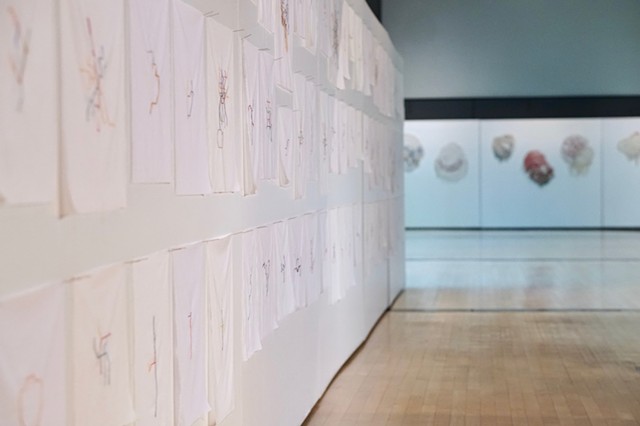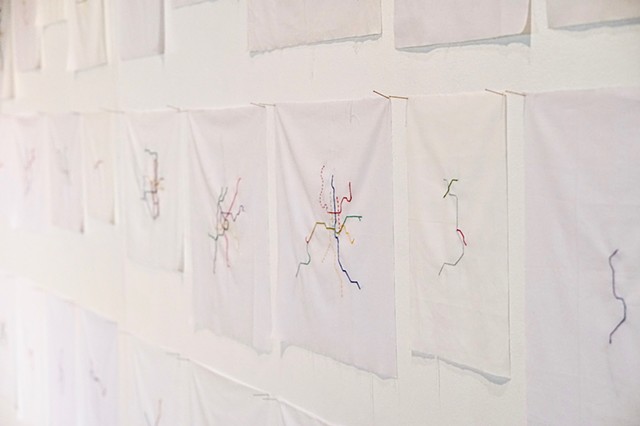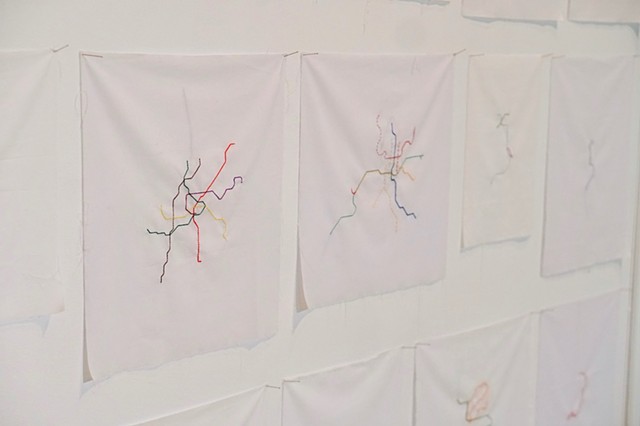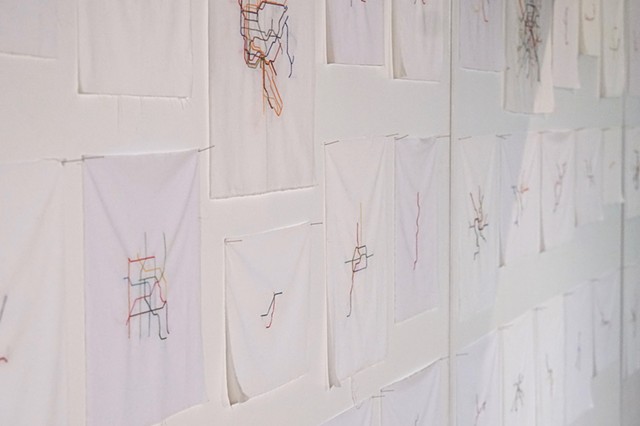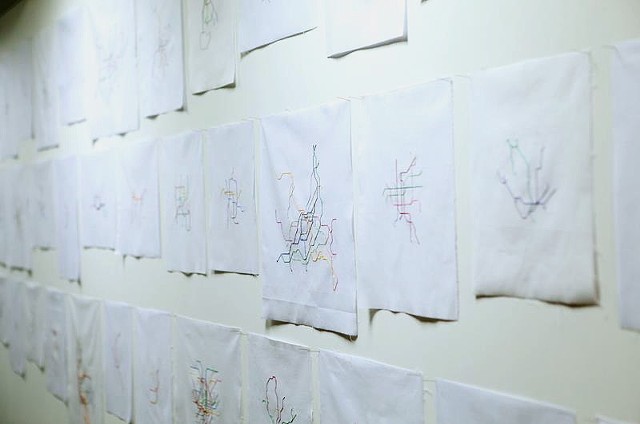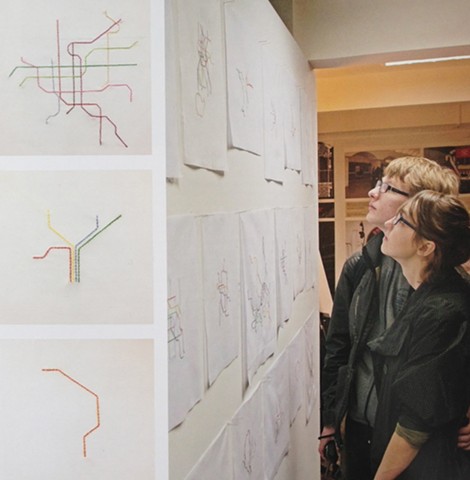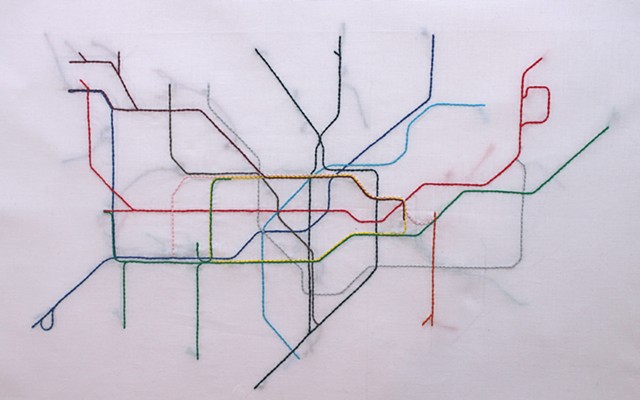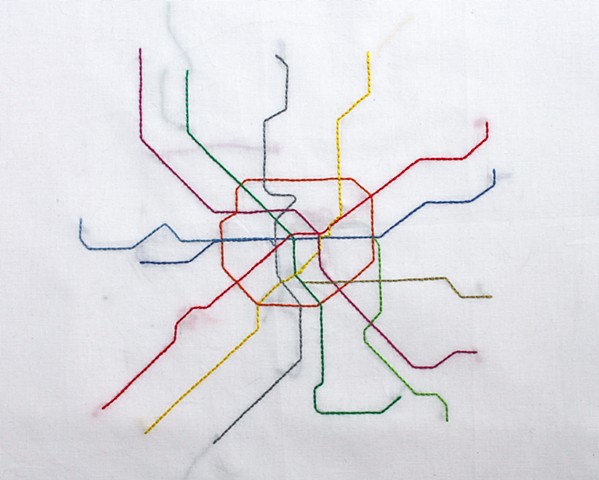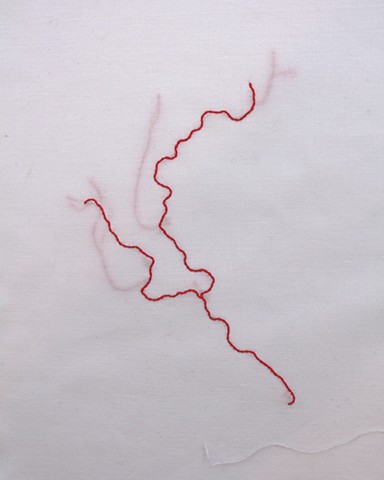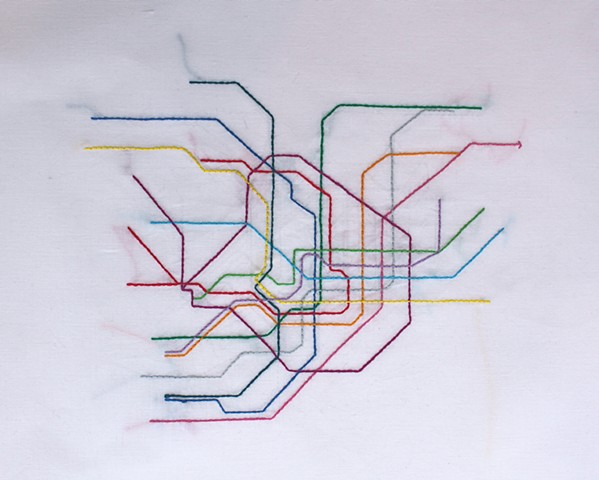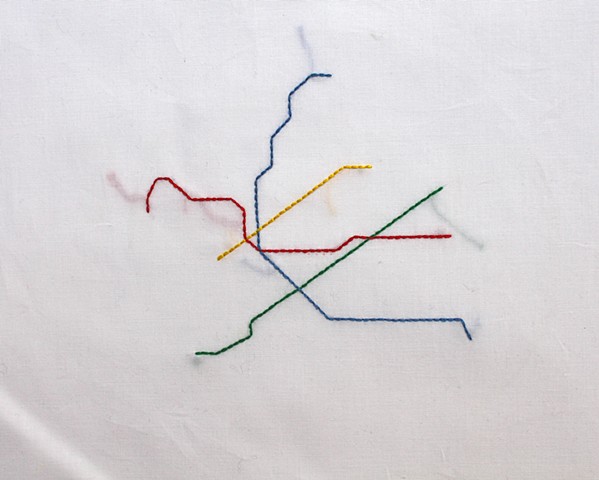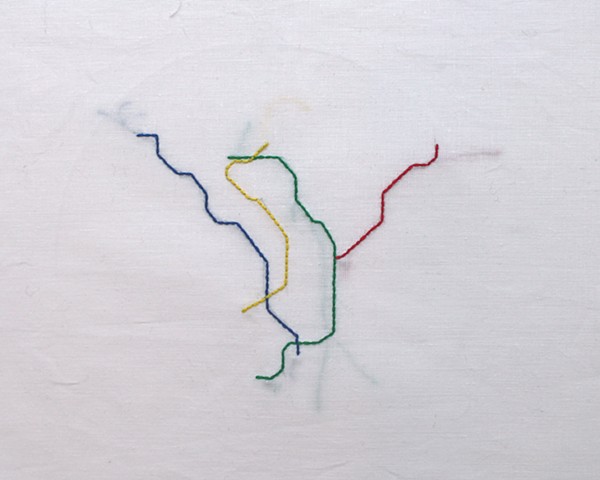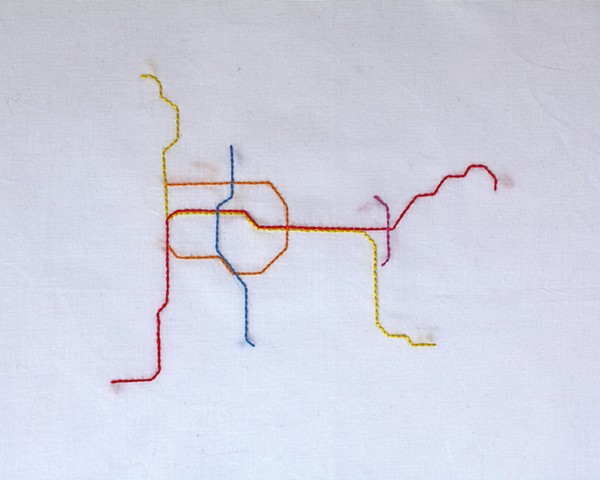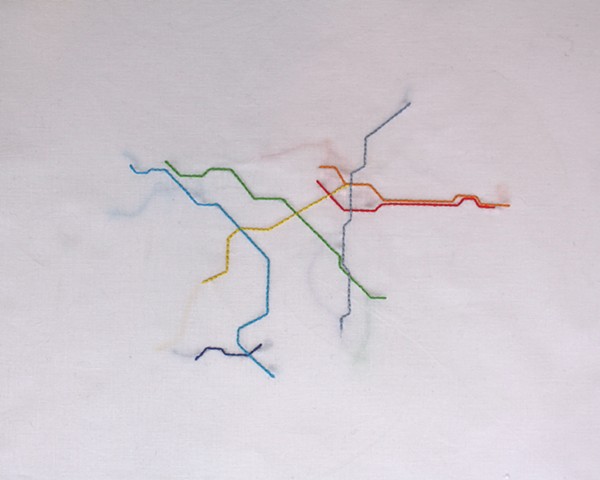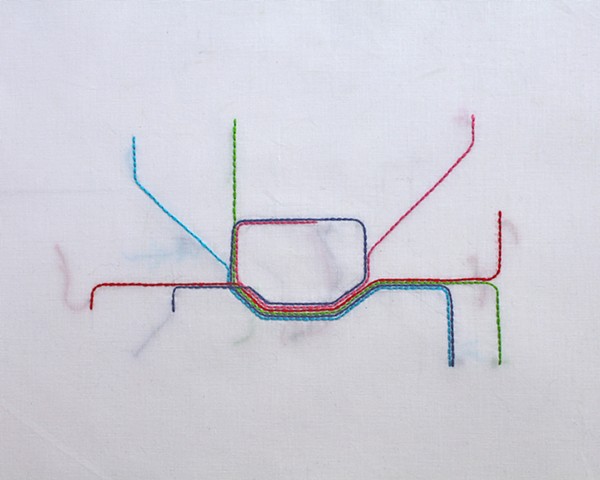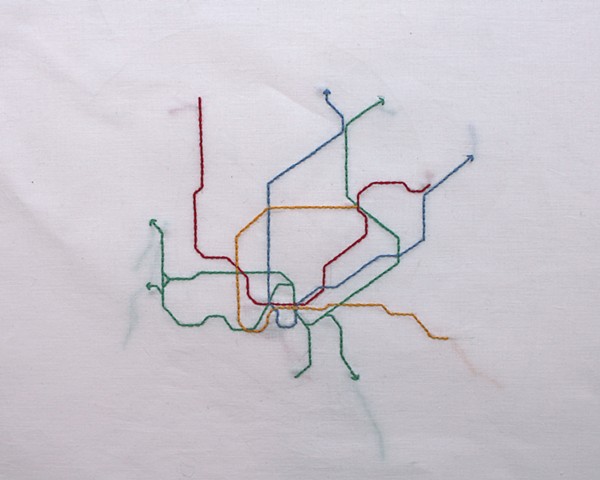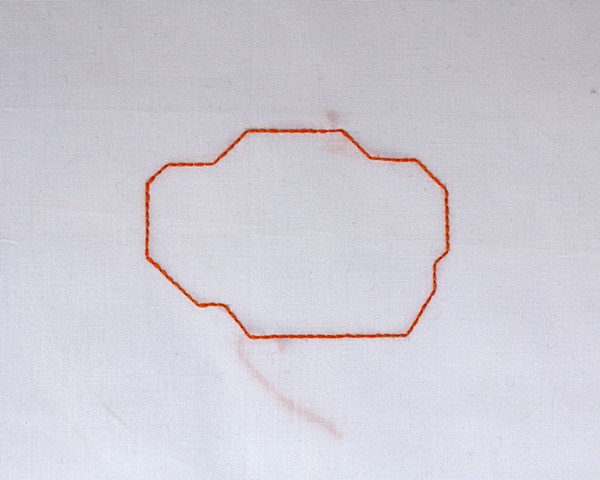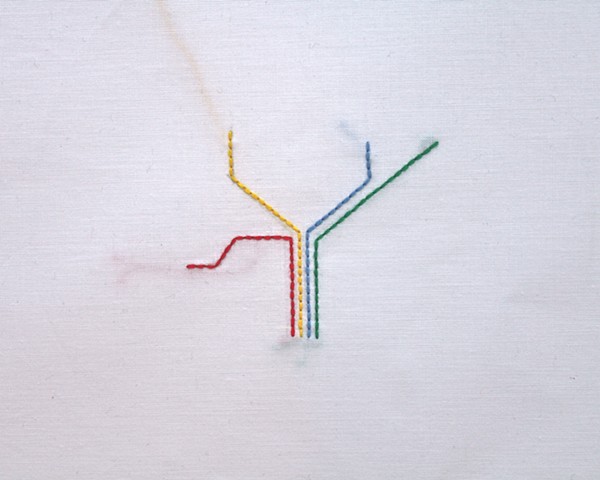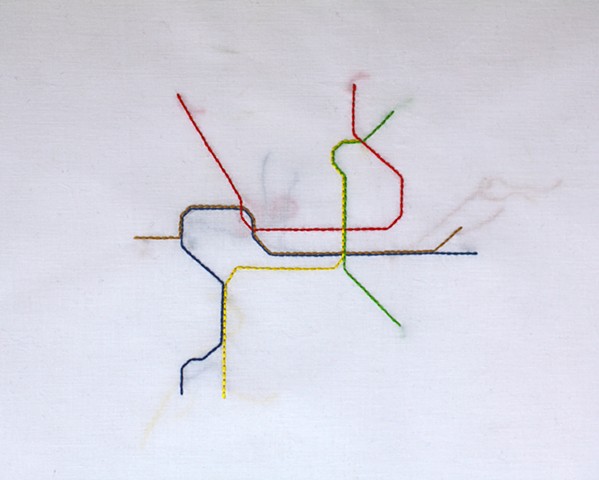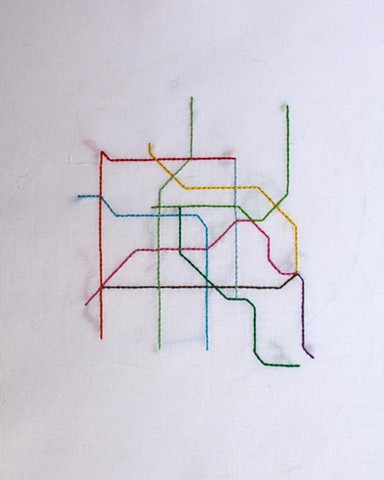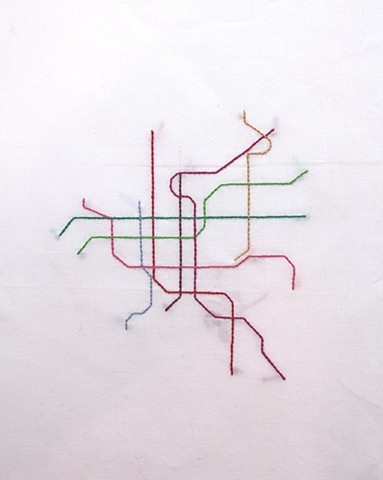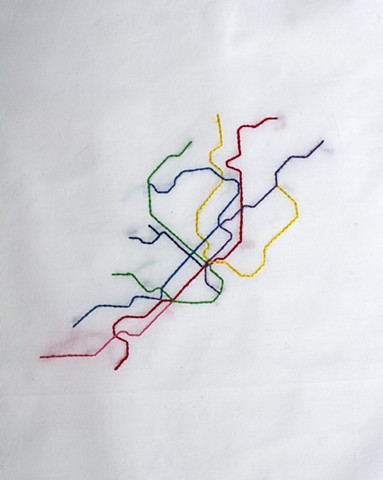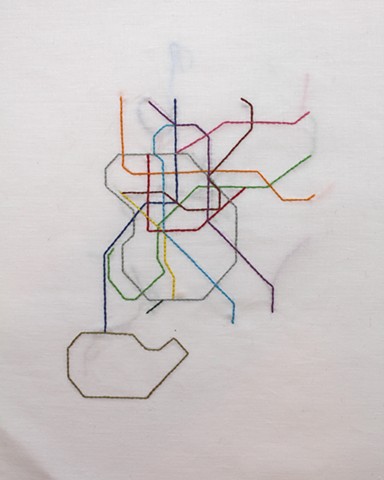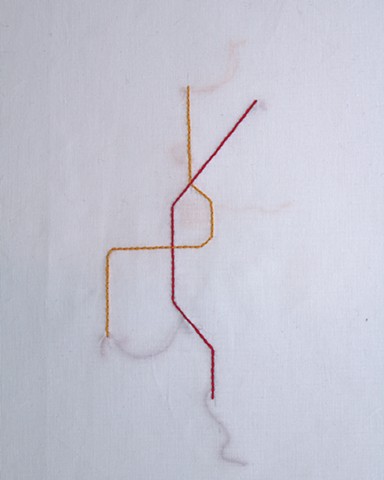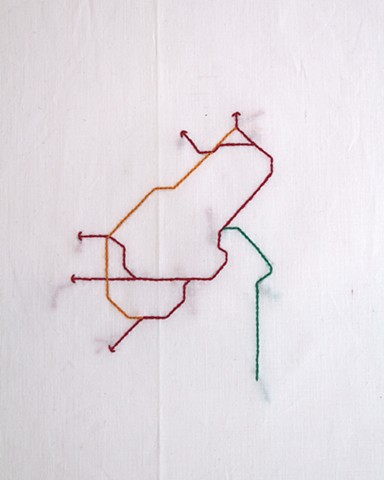Metro
Metro
143 (world's all) subway maps
backstitched by hand
selected pieces
thread, cotton
average 14" x 14"/ 35 x 35cm each
Anna Matveeva, Pro Arte 2012 Catalogue,
St. Petersburg Metro Museum, Russia:
There is hardly a critic who can resist the temptation of dealing with Heidi Hankaniemi's work within a heavily gendered framework.
The full range of stereotypes, historical references tied to femininity and a flourishing multitude of dualisms stemming from the core “boys vs. girls” duality, present themselves readily upon the first look at the Metro series.
The metro system itself is of course, a stereotypically male domain: metal, mechanical, and built using precise mathematical calculations. Here we can also add a smidgen of Freudian analysis; in his “Interpretation of Dreams” the train piercing the space of a tunnel is presented as one of the most overtly phallic images. The metro workers are also almost exclusively male: mechanics, engineers, even conductors. The women one meets in this setting are employed as cleaning staff and ticket sellers, clearly not the occupations that exclusively define the subway environment.
In this series, the topic of investigation is in clear contrasts with the media that embodies it. One can hardly think of any other craft tradition with more feminine connotations then embroidery.
Women have embroidered from the time immemorial: a right of passage for girls, a hobby for both lower and upper classes, a full profession that put bread on the table (especially in the times when most other professions where closed off to women); it was always a core female occupation. Even today, when the craft aspect has shifted to mass-production, the women are still behind the embroidery machines in Bangladesh and China. Until rather recently, in Russian Orthodox tradition women where forbidden to paint icons, however embroidered iconography flourished in the convents. On the whole, the drive to speak in a clearly female language about clearly male subjects is brought to a fine point in Hankaniemi's work. It challenges the viewers and those who are not up to this challenge limit their reception of the work to a few raised eyebrows.
Embroidery and subway maps? What is this? What are these patches of cloth doing in a museum where we come to see trains, motors and other heavy equipment?
Hankaniemi deals with interconnectedness of the male and female labor practices, worldviews and the ways they embody possibilities to change our world. It’s a narrative that tells us that we are able to translate male language into a female one. It is also a travelogue: the artist embroiders the subway system in the cities that she has visited – London, New York, Helsinki, Moscow… The idea of travel goes beyond simple marks delineating the map of the world, it transports us outside of the quotidian journey that we undertake several times a day to the magical childhood visit to the realm of a fairytale.
Here we can experience an underground kingdom filled with its own mythology; stately light-filled palaces are guarded by screaming monsters with glowing eyes upon their metal faces. The monsters devour the travelers who come before them and only our hero emerges unscathed, clutching the very soul of this kingdom – the schematic that shows its inner clockwork.
Or perhaps it is a tale of time travel (nowhere does one feel the passage of time like in the midst of monotonous rattling of the underground). Stations, cities, countries are spinning around the artist as she grasps for a presumed constant, embroidered schematics of her journeys, the only way to remain herself within every stitch of the journey.
By presenting Hankaniemi’s work within its walls, an environment most often visited by specialists interested in the dimension of the technological, the St. Petersburg Metro Museum expanded the lyrical dimension of its holdings. This gesture reaffirms the mission of contemporary art: to show the viewer that any theme, any point in time and space, may become the site of departure for contemplation of ones place in life …and a subway car is just as good of a site as any.
translation Dmitri Strakovsky


